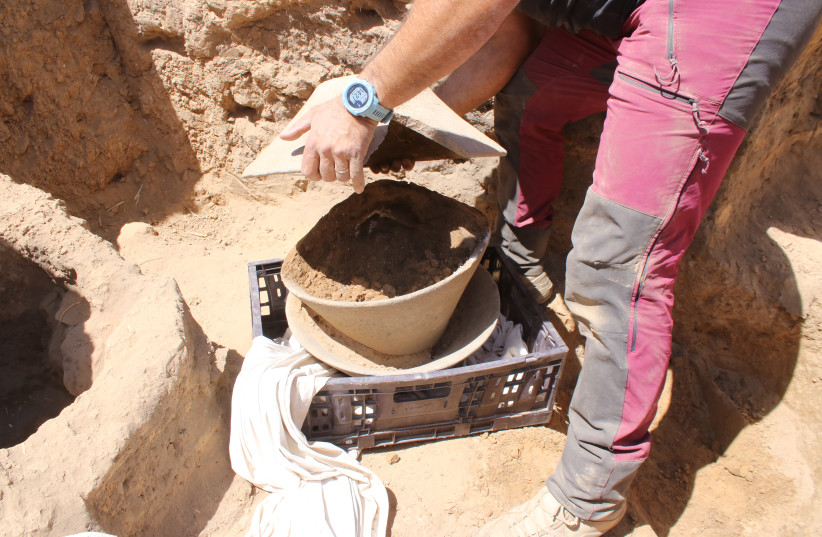IAA discovers rare 6,000-year-old elephant ivory vessel near Beersheba
The discovery provides evidence of ties between this region and Egypt in the Chalcolithic period.
An ivory vessel made from an elephant tusk that serves as evidence of ties between our region and Egypt going back to the Chalcolithic period (about 4500 to 3500 BCE) has been uncovered in an Israel Antiquities Authority (IAA) excavation near Beersheba.
Found shattered to pieces in the excavation, the vessel was “brought back to life” in the IAA’s treatment laboratories. The tusk – which seems to have been part of a cultic vessel used for burial – will be displayed this Thursday at the annual Israel Prehistoric Society Conference.

“The vessel is 20 centimeters across. It is gorgeous, and exceptional in its design,” Milevski added. “The small side handles are symmetrically arranged, with two handles set into the vessel’s neck and two additional handles vertically below them at its base. “
In cooperation with Dr. Ianir Milevski and Dr. Liora Kolska Horwitz of the Hebrew University of Jerusalem (HU), the team achieved the first understanding of the vessel’s nature – it was made from elephant tusk ivory.
Deepens understanding of prehistoric regional exchange ties
“This find deepens our understanding of the Chalcolithic period and of the cultural exchange ties of our region with both neighboring and distant cultures,” the researchers noted.“One of the most interesting questions regarding this vessel,” said Levi-Hevroni and Milevski, “is whether the vessel was brought here fully designed or whether the ivory tusk was brought here as raw material and then sculpted by a local craftsperson.






